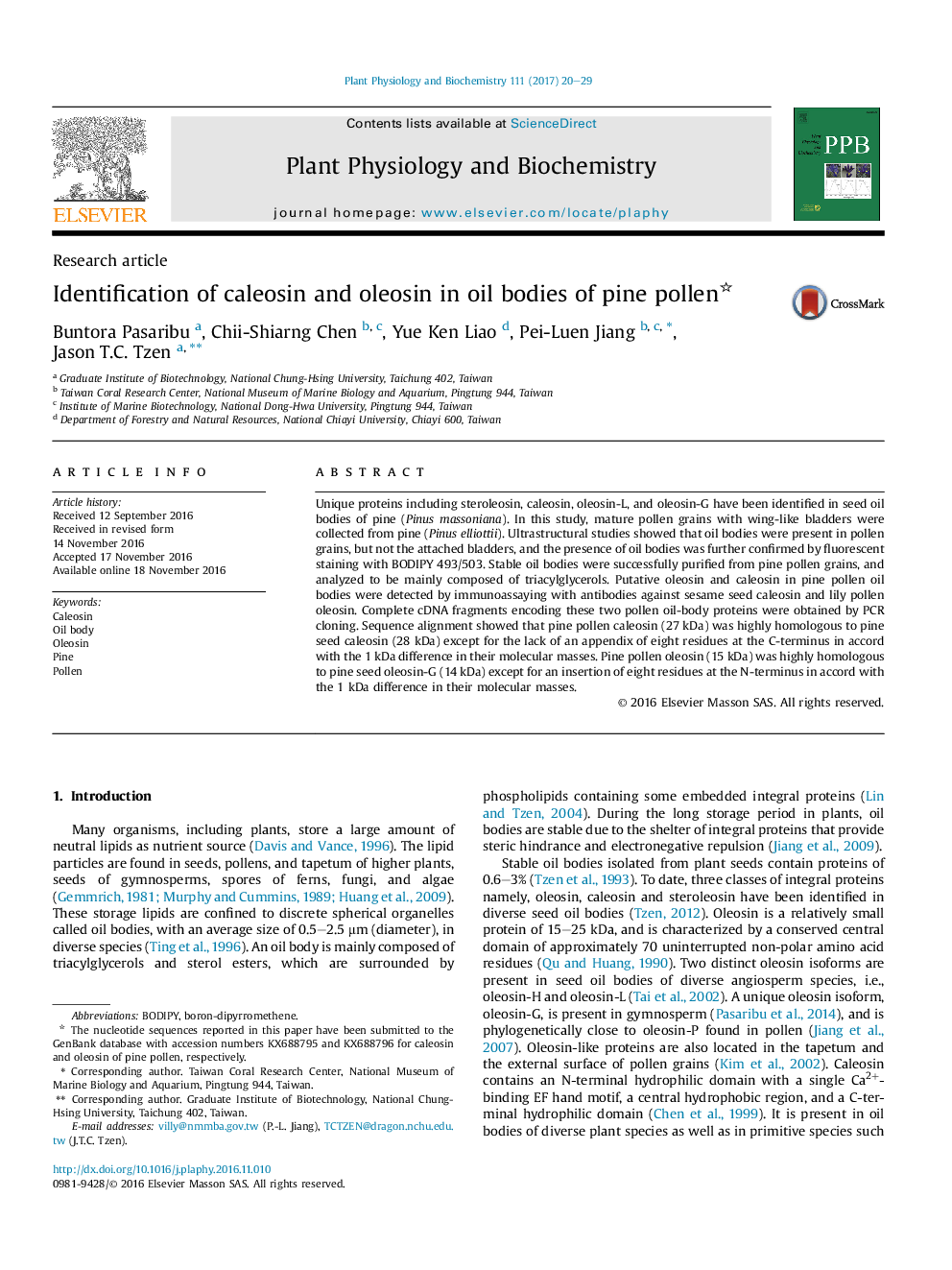| Article ID | Journal | Published Year | Pages | File Type |
|---|---|---|---|---|
| 5515527 | Plant Physiology and Biochemistry | 2017 | 10 Pages |
â¢Oil bodies were found in pine pollen grains, but not in the wing-like bladders.â¢One caleosin and one oleosin were identified in pine pollen oil bodies.â¢Pine pollen caleosin was highly homologous to pine seed caleosin.â¢Pine pollen oleosin was highly homologous to pine seed oleosin-G.
Unique proteins including steroleosin, caleosin, oleosin-L, and oleosin-G have been identified in seed oil bodies of pine (Pinus massoniana). In this study, mature pollen grains with wing-like bladders were collected from pine (Pinus elliottii). Ultrastructural studies showed that oil bodies were present in pollen grains, but not the attached bladders, and the presence of oil bodies was further confirmed by fluorescent staining with BODIPY 493/503. Stable oil bodies were successfully purified from pine pollen grains, and analyzed to be mainly composed of triacylglycerols. Putative oleosin and caleosin in pine pollen oil bodies were detected by immunoassaying with antibodies against sesame seed caleosin and lily pollen oleosin. Complete cDNA fragments encoding these two pollen oil-body proteins were obtained by PCR cloning. Sequence alignment showed that pine pollen caleosin (27Â kDa) was highly homologous to pine seed caleosin (28Â kDa) except for the lack of an appendix of eight residues at the C-terminus in accord with the 1Â kDa difference in their molecular masses. Pine pollen oleosin (15Â kDa) was highly homologous to pine seed oleosin-G (14Â kDa) except for an insertion of eight residues at the N-terminus in accord with the 1Â kDa difference in their molecular masses.
